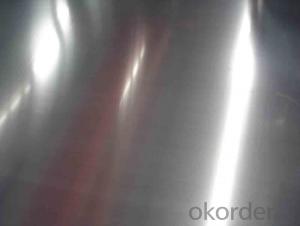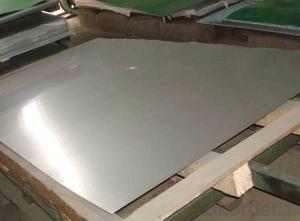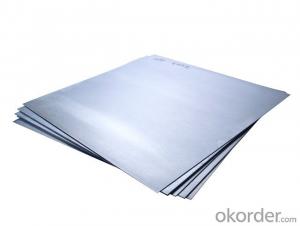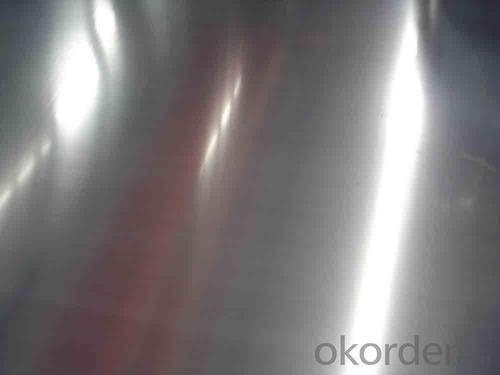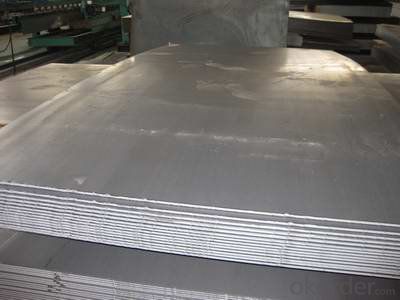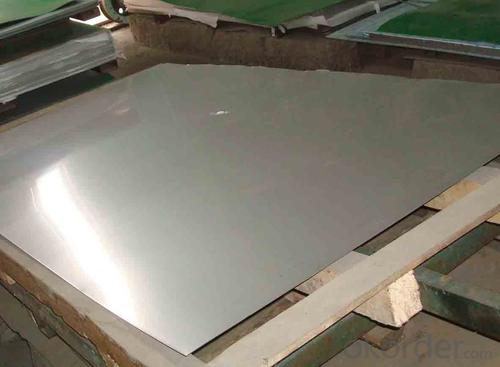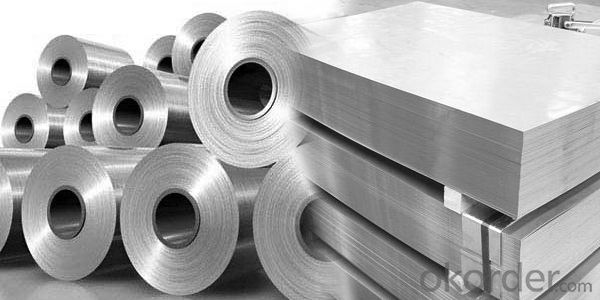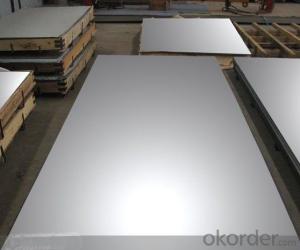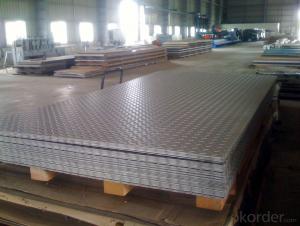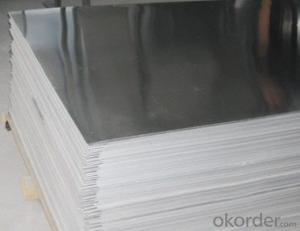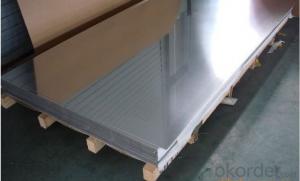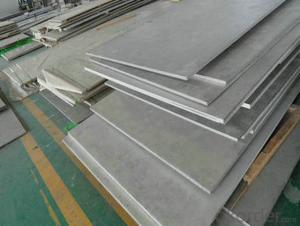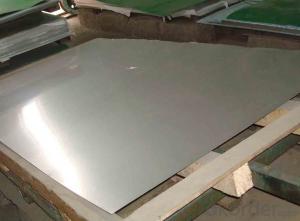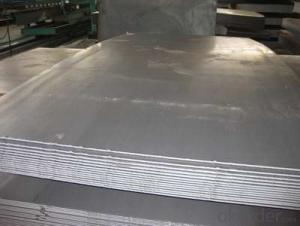Stainless Steel Sheet Price with No.4 Surface Treatment
- Loading Port:
- Shanghai
- Payment Terms:
- TT OR LC
- Min Order Qty:
- 500 m.t.
- Supply Capability:
- 5000000 m.t./month
OKorder Service Pledge
OKorder Financial Service
You Might Also Like
Hot sale stainless steel sheet 201/202/304/304l/310S/309S/316L/316Ti/316/321/410/420/430/444/443/409L,and 904L.
Description of Stainless Steel Sheet:
Description | steel sheet,hot rolled steel sheet,cold rolled steel sheet, steel sheet,sheet,steel plate |
Standard | ASME, ASTM, EN ,BS,GB,DIN, JIS etc |
Application | Steel sheet applies to construction field, ships building industry, petroleum & chemical industries, war and electricity industries, food processing and medical industry, boiler heat exchanger, machinery and hardware fields. |
Packaging | Standard export sea-worthy packing |
Delivery time | 10-30 days |
Quality | No.1 |
Productivity | 500 tons/Day |
Note | Our company has cooperative relation between the domestic agents. Stainless steel sheet can be made accordingto the customers requirements. Fasten delivery. Quality assured. |
Contacts | If you have any question,please feel free contact me. |
Stainless steel sheet surface finish characteristics
Surface finish | Characteristics and application |
2B | The surface brightness and flatness of no2B is better than no2D. then through a special surface treatment to improve its mechanical properties,No2B could nearly satisfy comprehensive uses. |
No.1 | Polished with abrasive belt of grit#100-#200, have better brightness with discontinuous coarse stria, used as inner and external ornaments for building, electrical appliances and kitchen utensils etc. |
No.4 | Polished with abrasive belt of grit #150-#180,have better brightness with discontinuous coarse stria, but thinner than No3, are used as bathtub buildings inner and external ornaments electrical appliances kitchen utensils and food processing equipment etc. |
HL | Polished with abrasive belt of grit #150-#320 on the NO.4 finish and has continuous streaks, mainly used as buildings ornaments elevators, door of building, frontal plate etc. |
BA | Cold rolled, bright annealed and skin-passed, the product have excellent brightness and good reflexivity like mirror, kitchen apparatus, ornament etc. |
8K | The product have excellent brightness and prefer reflexivity can to be the mirror. |
Main Features of stainless steel sheet :
•Escalator, Elevator, Doors
•Furniture
•Production tools, Kitchen appliances, freezers, cold rooms
•Auto Parts
•Machinery and Packaging
•Equipment and Medical devices
•Transport system
Product Details:
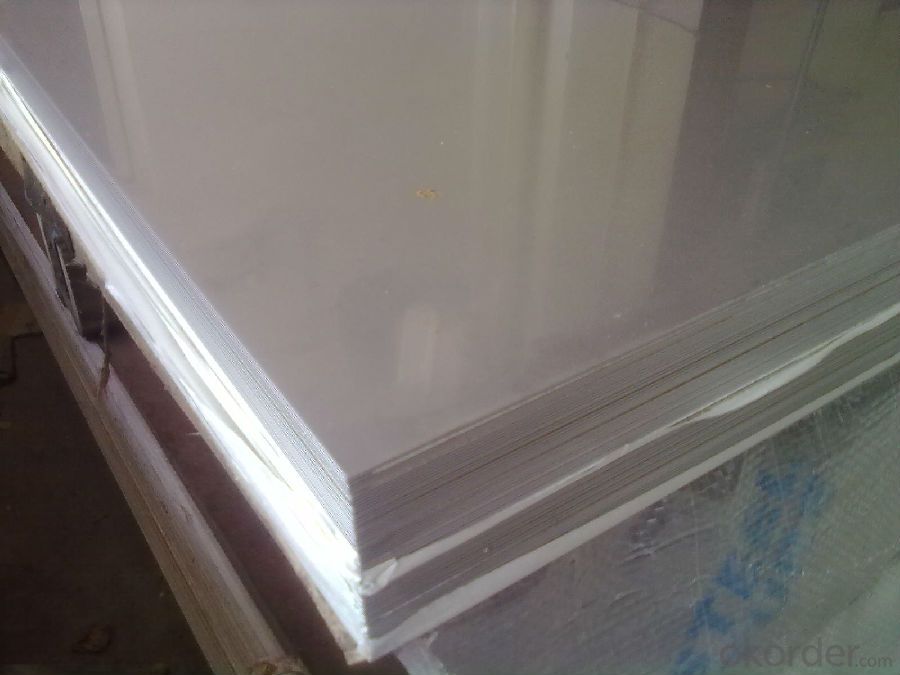

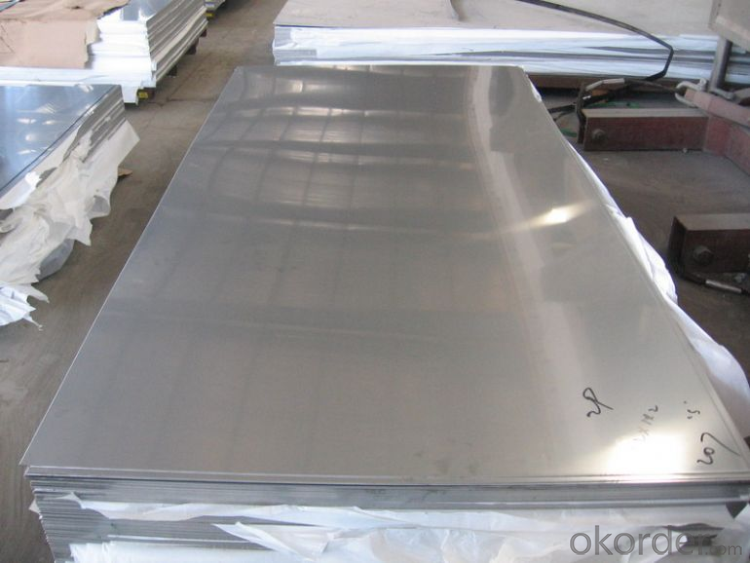



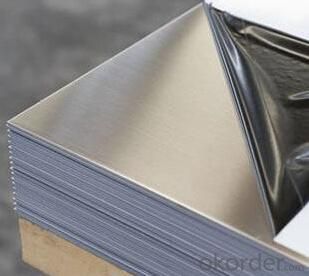
Cold Rolled and Hot Rolled:

Packing and Loading:
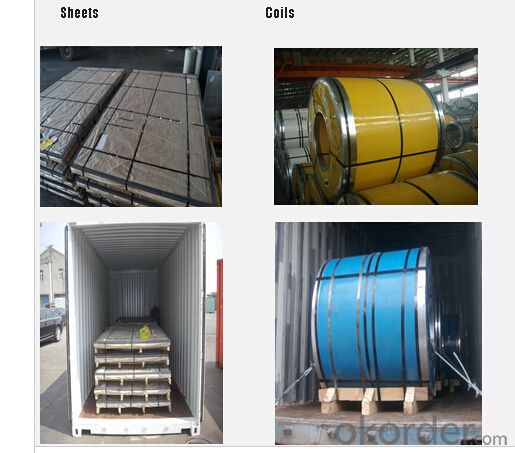
FAQ:
1. What's the quality?
Very fine, we have been exported to more than 30 countries.
2. How long get reply?
Usually within 24 hours
If you have any question about stainless steel sheets, do not forget to send the email to us! You will get the competitive Price and have a very good experience about the Buying Process! CNBM International Corporation is always your trustful friend!
- Q: Can stainless steel sheets be used for architectural cladding?
- Yes, stainless steel sheets can be used for architectural cladding. Stainless steel is a popular choice for architectural cladding due to its durability, corrosion resistance, and aesthetic appeal. It provides a sleek and modern look to buildings while also offering a long-lasting and low-maintenance solution for exterior cladding applications.
- Q: What are the common applications for stainless steel sheets?
- Stainless steel sheets are commonly used in a variety of applications due to their durability, corrosion resistance, and aesthetic appeal. Some common applications include kitchen appliances, automotive parts, construction materials, medical equipment, and industrial machinery.
- Q: Are stainless steel sheets suitable for laser cutting?
- Indeed, laser cutting proves to be a suitable technique for cutting stainless steel sheets. By effortlessly penetrating the material, lasers facilitate the creation of precise and pristine cuts. The elevated heat resistance of stainless steel sheets further renders them ideal for laser cutting, as they endure the intense heat produced by the laser beam. Moreover, owing to their exceptional corrosion resistance, stainless steel sheets enjoy significant popularity across diverse industries. The utilization of laser cutting guarantees minimal distortion and eliminates any physical contact with the material, thereby yielding a finished product of superior quality.
- Q: Are stainless steel sheets corrosion-resistant?
- Indeed, corrosion is not a concern when it comes to stainless steel sheets. This type of steel is engineered to resist corrosion and staining, making it exceptionally well-suited for a wide range of uses. The presence of abundant chromium in stainless steel prompts the formation of a protective layer on its surface, effectively warding off the development of rust and corrosion. Consequently, stainless steel sheets are highly suitable for deployment in environments prone to moisture, chemicals, or other corrosive agents. Moreover, their ability to endure high temperatures and exhibit remarkable durability further bolsters their resistance to corrosion.
- Q: How do I prevent galvanic corrosion on stainless steel sheets?
- To prevent galvanic corrosion on stainless steel sheets, you can consider a few measures. Firstly, ensure that you use compatible metals when in contact with stainless steel to avoid creating a galvanic couple. Additionally, using insulation or separating materials, such as plastic or rubber gaskets, between dissimilar metals can help prevent galvanic corrosion. Regular cleaning and maintenance of stainless steel surfaces can also mitigate the risk of corrosion. Lastly, applying protective coatings or using corrosion inhibitors can provide an extra layer of defense against galvanic corrosion on stainless steel sheets.
- Q: Are stainless steel sheets available in different patterns?
- Yes, stainless steel sheets are available in different patterns. Stainless steel is a versatile material that can be manipulated in various ways to create unique patterns and designs. Some common patterns include brushed, satin, mirror, diamond, and checker plate. These patterns not only enhance the aesthetic appeal of stainless steel sheets but also offer functional benefits such as increased slip resistance or improved durability. Whether you are looking for a sleek and modern look or a more textured and decorative finish, there are numerous options available in stainless steel sheets to suit your needs.
- Q: Can stainless steel sheets be used for magnetic shielding?
- To a certain extent, stainless steel sheets can be utilized for magnetic shielding. Although stainless steel is not intrinsically magnetic, it possesses some magnetic properties due to the presence of iron, a magnetic material, in stainless steel alloys. This enables stainless steel sheets to exhibit weak magnetic characteristics. Nevertheless, the magnetic shielding capabilities of stainless steel sheets are limited when compared to materials specifically engineered for magnetic shielding, such as mu-metal or nickel-iron alloys. These materials have a higher permeability, meaning they can redirect and absorb magnetic fields more efficiently than stainless steel. However, stainless steel sheets can still offer some level of magnetic shielding, particularly in environments with lower intensity magnetic fields. They can assist in reducing the transmission of magnetic fields from one area to another, which can be beneficial in certain applications. Nonetheless, for situations that require high-intensity or sensitive magnetic shielding, it is recommended to utilize specialized magnetic shielding materials for optimal effectiveness.
- Q: What are the advantages and disadvantages of net drawing stainless steel users?
- Stainless steel wire drawing is on the market is more common of a conventional plate, that is, a straight line covered with the entire stainless steel plate. The 8K mirror panel is the same as glass mirror. Stainless steel wire drawing is through the abrasive belt sanding out of effect, relatively simple, and the speed is very fast. The 8K mirror panel requires more than 8 sets of machines, first coarse sand, and then eliminate the grinding head, flowers and other operations to complete mirror effect, relatively speaking, mirror is much more complicated, and the quality of the market is different.
- Q: What is the fatigue strength of stainless steel sheets?
- The fatigue strength of stainless steel sheets can vary depending on various factors such as the grade of stainless steel, surface finish, thickness, and any surface treatments or coatings applied. It is typically higher than that of carbon steel, making stainless steel sheets more resistant to fatigue failure under cyclic loading. However, the exact fatigue strength value will vary and can be determined through testing and analysis specific to the particular stainless steel sheet being used.
- Q: What is the process of stainless steel mirror panel? What's the difference between them and stainless steel sand blasting plates?
- The 8K board, also called mirror panel, is polished on the surface of stainless steel by grinding fluid through polishing equipment, so that the surface of the plate is as clear as the mirror. Uses: mainly used in architectural decoration, elevator decoration, industrial decoration, facilities, decoration and other stainless steel products.
Send your message to us
Stainless Steel Sheet Price with No.4 Surface Treatment
- Loading Port:
- Shanghai
- Payment Terms:
- TT OR LC
- Min Order Qty:
- 500 m.t.
- Supply Capability:
- 5000000 m.t./month
OKorder Service Pledge
OKorder Financial Service
Similar products
Hot products
Hot Searches
Related keywords
